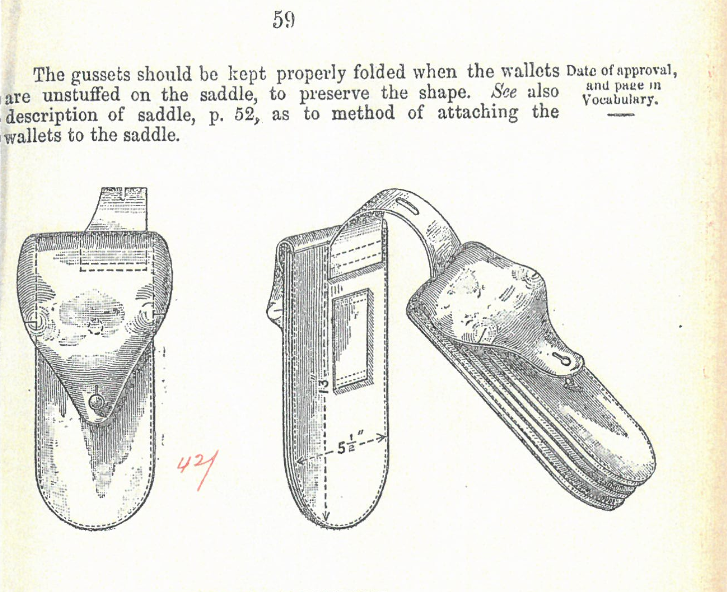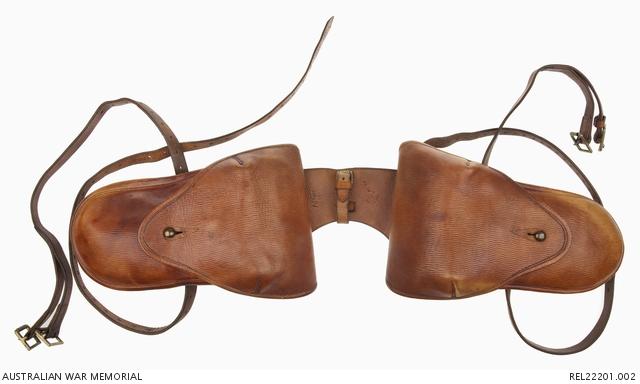The evolution of military saddlery and harness
Gerard Hogan is undertaking research on the evolution of military saddlery and harness used by the Australian Military from the colonial era to the First World War, documenting changes to allow curators and collectors to accurately identify this equipment and its parts.
Saddlery and harness equipment underwent significant evolution from the early 1800s to 1919 to adapt to tactical and technological changes in warfare. These changes can be identified through recorded material and existing examples.
Trying to identify the correct combination of parts that form a piece of equipment for a particular period can be a confusing and complex task. Identification is made more difficult by the incorrect use of common terms.
Research to date has focused on rare publications, photographs, paintings and examples held in the Australian War Memorial collection. While changes to equipment are documented in relevant categories and chronological order, information needs to be supported by photographs and diagrams. Where possible, electronic web links to libraries, museums and collections will be recorded.
Using documented evidence is important, as examples of equipment that captures the evolution of these changes are limited: leather deteriorates over time, equipment parts are modified or reused to upgrade equipment, and military horse equipment is rarely used in modern times.
An example of modified saddle equipment can be seen in the evolution from pistol holsters to saddle wallets. In the early 1800s, two pistols were commonly used by cavalry, requiring carriage in specialised pistol holsters located on each side of the front of the saddle. When these were discarded they were often replaced with wallets.

A pair Of flintlock rifled officer’s pistols of carbine bore, and saddle holsters, signed Wilkinson, Edinburgh, c.1815–1820. Source: Lock, Stock and History Antiques, 2019.
In the mid-to-late-1800s, wallets were modified to be used on different saddles used by mounted units. The single connecting strap was replaced a two-piece adjustable buckling part and moving rear loops to better fit different saddles.

Pistol wallets mounted on the front of the saddle. Source: www.paoyeomanry.co.uk

Single non-folding gussets on saddles of an unidentified Australian colonial unit. Source: New South Wales State archives and records online (4481_a026_000695).
In the 1890s, the single non-folding gusset was replaced with a folding gusset, so that wallets could expand outwards rather than bulging forward and back and taking up valuable seat room. The v-shaped front, which did not suit the new folded crease, was altered and a different cap was devised to rainproof the wallet. The connecting strap reverted to a single piece in order to suit the newly introduced one-sized saddle. This last pattern of wallet was still in service in the 1920s.

The folding gusset saddle wallets. Source: List of Changes and Patterns of Military Stores, Harrison & Sons, London, 1891.

A fine example of First World War saddle wallets with folding gussets.
While the wallet replaced the pistol holster and underwent several modifications, the pistol holster has been retained for ceremonial use.
Modification clues can be found and matched with supporting documentation. For example, removed stitches leave holes in leather where original pieces have been moved, and different ages of leather on equipment can indicate new and old versions. Locating dates and makers stamped on leather provides excellent clues, particulary as the Military had a policy of marking leather with identification stamps.
The same investigative process used to identify the evolution of wallets, will be translated across a multitude of saddlery and harness parts and will assist curators and historians to better understand the items in the Memorials collection.